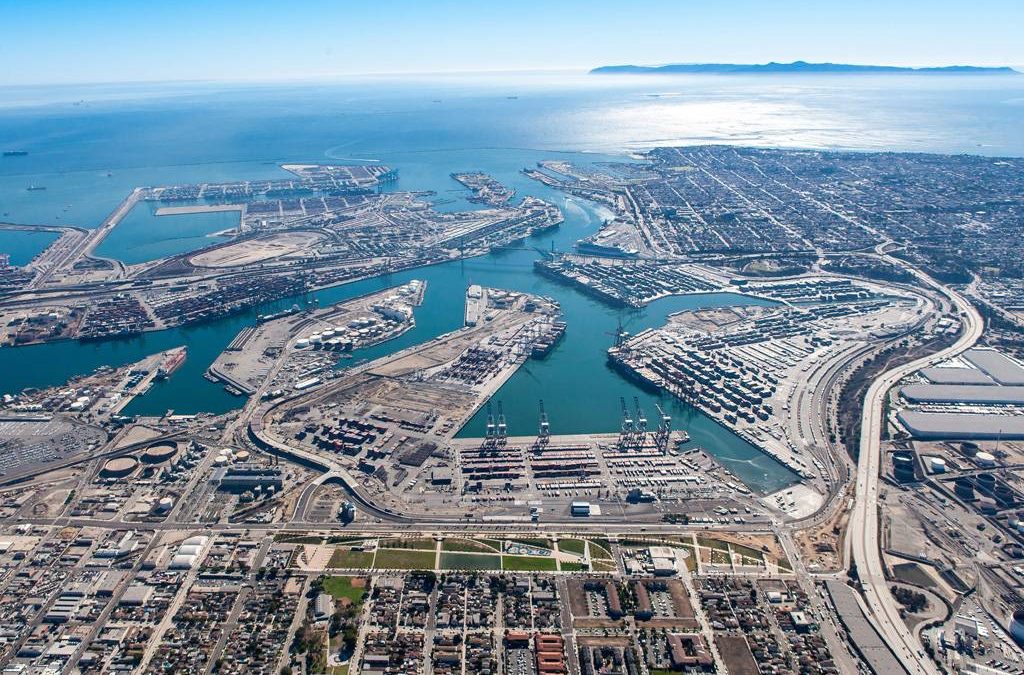The Port of Los Angeles concluded the busiest March and Q1 on record, handling nearly 2.6 million TEU in the three months through March 2021.
The port moved 957,599 twenty-foot equivalent units (TEUs) in March, a large increase over the 449,568 TEUs moved during the same month last year at the onset of the pandemic, the port said April 14.
March was also the third busiest month on record for the port.
“The consumer spending surge continues unabated, with more of us vaccinated, businesses opening, economic outlook looks strong,” said Gene Seroka, executive director of the port. “Consumers are spending as fast as importers can stock their shelves.”
March volumes at the port marked the eighth consecutive month of year-on-year increases, driven largely by one-way trade imports. The port has averaged about 900,000 TEU per month over this period, a record in itself.
The port handled 490,115 loaded TEU imports, up 122.5% on the year. Firm consumer demand for furniture, home goods and appliances, athletic equipment and automotive parts helped drive the record number of imports, Seroka said.
Exports for March came in at 122,899 TEU, up just 1.5% when compared with March of 2020.
And the port expects volume strength well into Q2. Preliminary estimates suggest April volumes of 880,000 TEU, up 20% year on year, while May cargoes are expected at 840,000 TEU, an increase of 45% on the year.
And for the first time, the port is on track to exceed 10 million TEU for its fiscal year ending June 30.
On April 14, there were 20 vessels at anchor in San Pedro Bay, nine of which are set to berth at the Port of Los Angeles, down from the peak of around 40 ships at anchor in February as the port grappled with congestion.
The port of Los Angeles is the largest container gateway in North America.
Round-trip economics
Empty exports saw significant growth in March, when 344,585 TEU left the port unloaded, representing a 219% increase on the year.
“Based on our assessment, it’s quicker [for ocean carriers] to get the empties moved out on the ships and to the loading port in Asia than it would be to give containers to exporters here,” Seroka said.
This is consistent with current pricing dynamics on the trans-Pacific lane.
As export, or backhaul, rates from the North American West Coast to North Asia are currently at a steep discount to headhaul rates, there is little economic incentive for ocean carriers to load North American exports, which are typically low-value agricultural products and raw materials.
Platts Container Rate 14 — West Coast North America to North Asia — was assessed April 14 at $650/FEU, significantly lower than the $4,000/FEU headhaul rate.
Similar gains
The adjacent Port of Long Beach reported April 8 that it moved 840,387 TEUs in March, the busiest month in port history.
At the same time, the Port of Oakland saw its busiest month on record, with 241,470 TEU handled, the port said April 13.
“Ships are full, ocean freight rates are sky-high, and the need for empty containers to ship more cargo is never-ending,” said Bryan Brandes, maritime director at the Port of Oakland. “We just don’t see conditions easing in the next several months.”
Source: Hellenic Shipping






